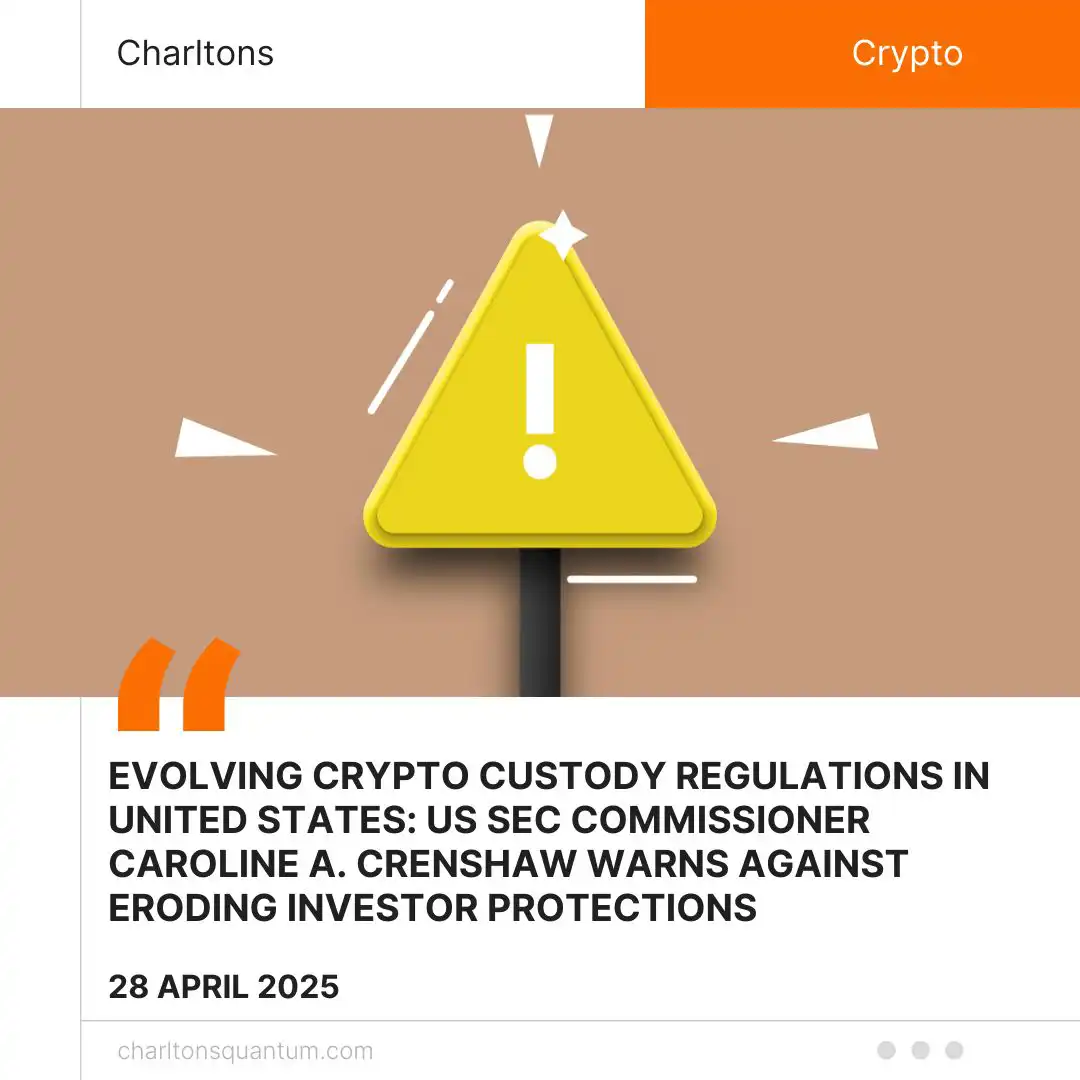
On 25 April 2025, United States Securities and Exchange Commission (US SEC) Commissioner Caroline A. Crenshaw delivered speech at the US Crypto Task Force’s third roundtable on custody. Commissioner Crenshaw warned against creating a separate, potentially weaker regulatory framework for crypto asset custody, asserting that innovation must not compromise the investor protection principles embedded in United States federal securities laws. Drawing powerful analogies from real-world trust scenarios, and supported by historical and legal precedents, Commissioner Crenshaw made it clear that blockchain-specific risks — including hacking, smart contract failures, and insolvency risk — demand even greater vigilance and regulatory robustness, not exemptions. Commissioner Crenshaw discussed the need to maintain the SEC’s “gold standard” of investor protection under the Custody Rule (17 C.F.R. § 275.206(4)-2), even in the face of technological evolution. She cautioned that differences between blockchain-based assets and traditional securities do not automatically justify relaxed custodial protections.
Definitions
Qualified Custodian: A financial institution such as a bank, broker-dealer, futures commission merchant, or trust company that meets the regulatory standards under Rule 206(4)-2 of the United States Investment Advisers Act of 1940 to securely hold client assets.
Omnibus Wallets: Aggregated crypto wallets holding assets for multiple clients, relying on internal records rather than blockchain entries for tracking individual ownership.
She supported her caution with examples from United States financial history’s infamous frauds like United States v. Madoff, No. 09 Cr. 213 (S.D.N.Y. 2009) and SEC v. Stanford International Bank, Ltd., Civil Action No. 3:09-CV0298 (N.D. Tex. 2013) which caused catastrophic investor losses when custodial trust broke down. Recent enforcement against crypto-focused firms, such as SEC v. Galois Capital (Press Release No. 2024-111, September 3, 2024), reinforced how custody failures in the digital asset space continue to pose serious risks. Commissioner Crenshaw further explained that history shows even well-intentioned market participants need strong regulatory frameworks. She referenced the paperwork crisis of the 1960s-70s, which led to the dematerialisation of United States securities into electronic form to combat inefficiencies and custodial vulnerabilities (DTCC Whitepaper, September 2020). She also pointed to the vital role played by the United States Securities Investor Protection Corporation (SIPC) under the United States Securities Investor Protection Act of 1970 (15 U.S.C. § 78aaa et seq.) in safeguarding traditional brokerage assets in cases of insolvency, protections not yet mirrored for crypto assets.
Crenshaw firmly opposed bifurcating custody regulations, warning that a “crypto-lite” standard would expose investors to unacceptable risks. Shared wallets heighten operational and external risks; stricter standards for segregation and real-time transparency may be necessary. Self-custody models for advisers could open floodgates to fraud, theft, and operational failure unless bound by the full rigor of the Custody Rule. Inconsistent state standards could lead to fragmented protections unless harmonised through federal-state regulatory collaboration. Clear investor education and disclosures must highlight the differences between crypto custody risks and traditional custodial protections.
Market and Compliance Implications
- Stricter Custody Controls: Expect regulatory proposals to mandate rigorous independent verification of client assets, annual surprise examinations, and fortified operational policies — consistent with historic US SEC rules (United States Investment Advisers Act Release No. 2968, December 30, 2009).
- Disclosure Mandate Expansion: Firms offering crypto custody will likely be required to disclose asset control mechanics, counterparty risks, and insolvency protection gaps under fiduciary standards.
- Rising Compliance Burdens for Exchanges: Major crypto trading platforms operating integrated brokerage-custody models may face mandates to eliminate omnibus pooling and segregate customer assets.
The United States Securities and Exchange Commission is setting the groundwork for equal or heightened regulatory standards for crypto asset custody compared to traditional financial custody. Custody failures will be met with aggressive enforcement, as seen in the Galois Capital action in 2024. Custody reform will likely be paired with broader fiduciary, insolvency, and disclosure frameworks specific to the crypto environment.
(Source: https://www.sec.gov/newsroom/speeches-statements/crenshaw-remarks-crypto-roundtable-042525)





